C. Fred Edwards Conservatory
Introduction
Author-Uploaded Audio
Museum Director Geoffrey Fleming introduces the conservatory and discusses sculptor Harriet Whitney Frishmuth, who designed a sculpture found in the conservatory
Text-to-speech Audio
Images
The conservatory entrance, with “Play Days” by Harriet Whitney Frishmuth
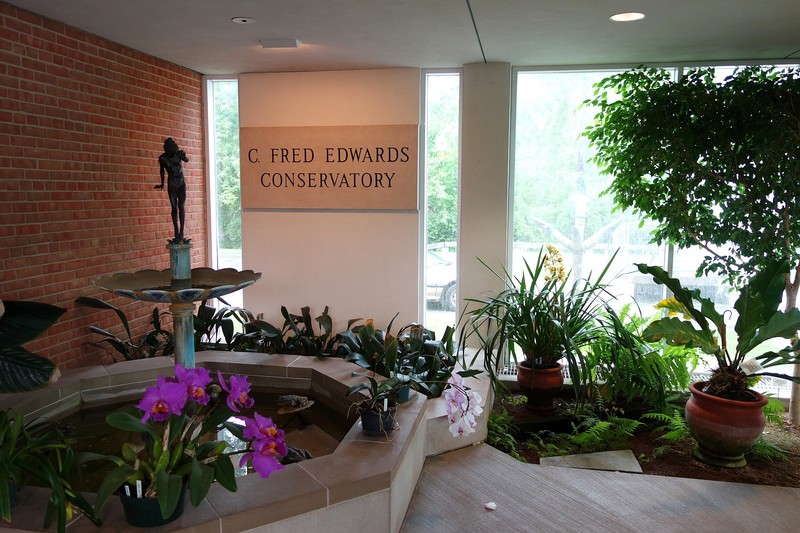
The C. Fred Edwards Conservatory, featuring "The Huntington Museum of Art Tower" by renowned artist Dale Chihuly
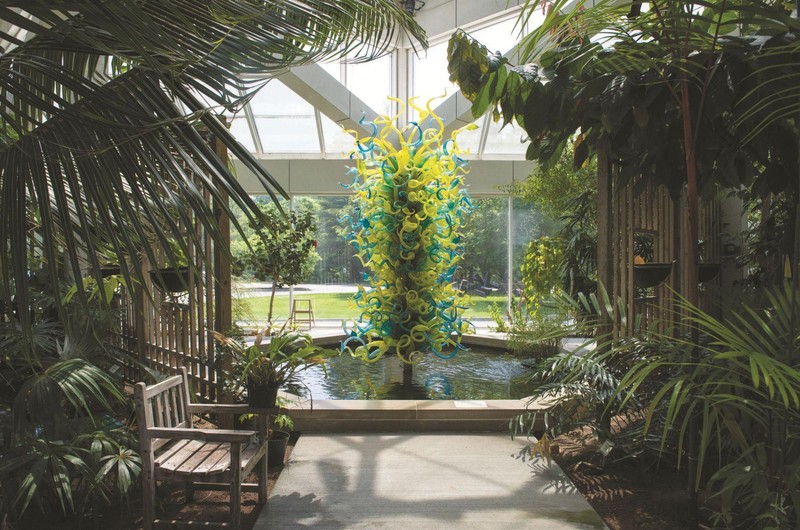
Huntington Museum of Art Tower
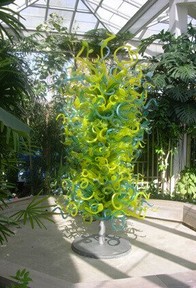
Interior of the conservatory
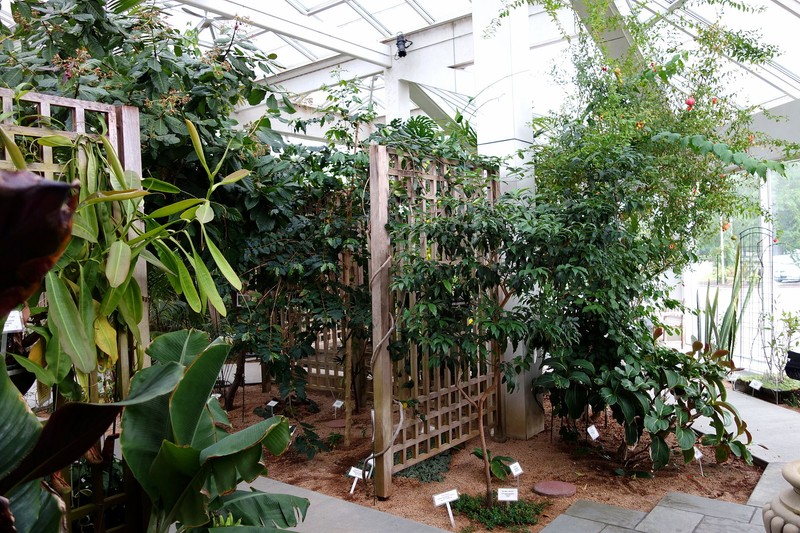
Interior of the conservatory
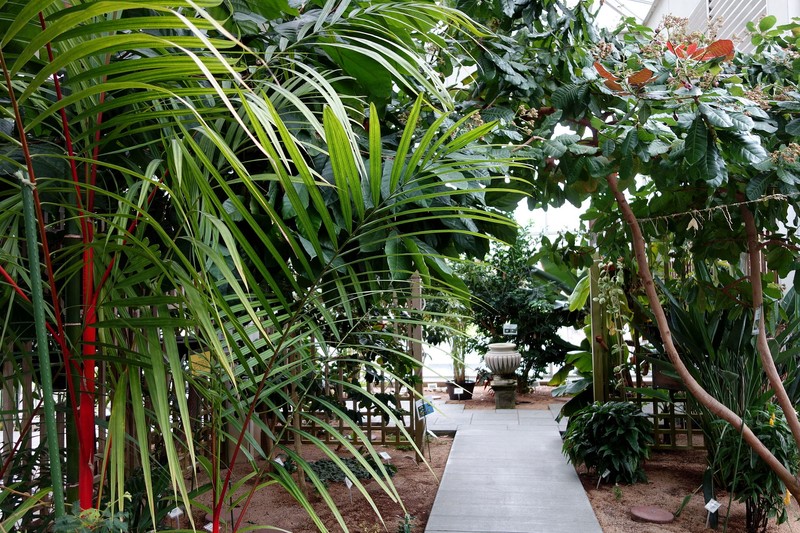
An orchid at the conservatory
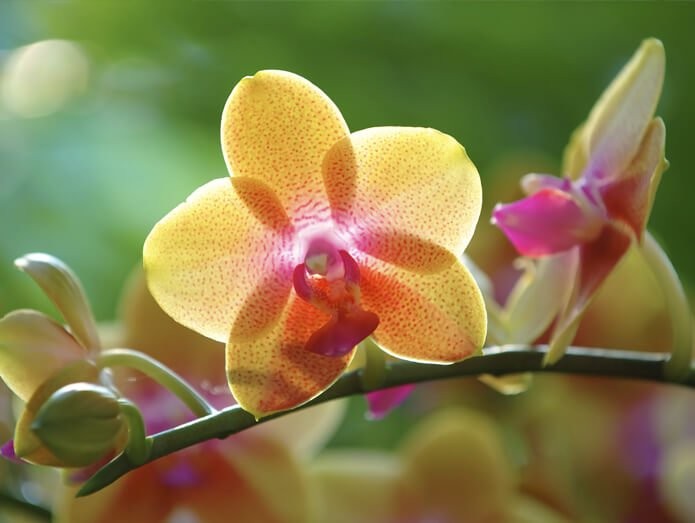
A rare ghost orchid in bloom at the conservatory in 2014
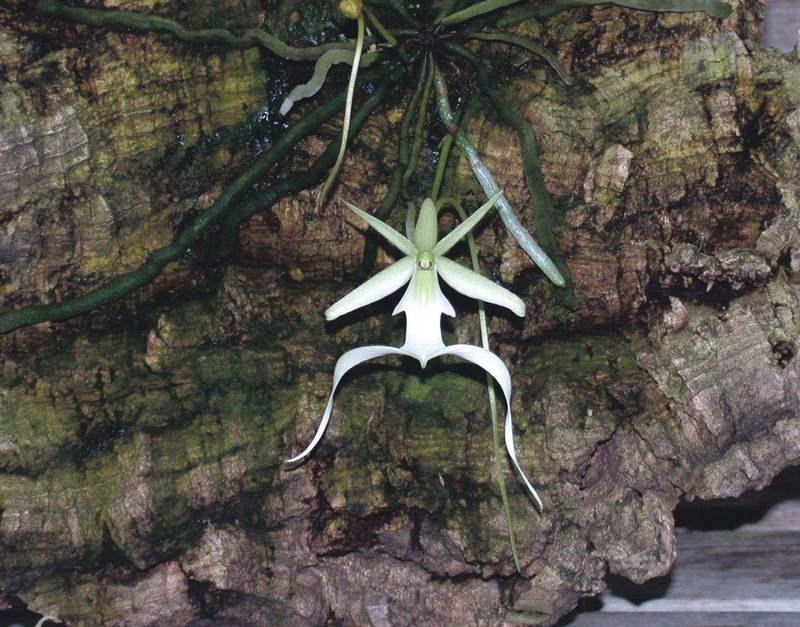
Dwarf Cavendish bananas
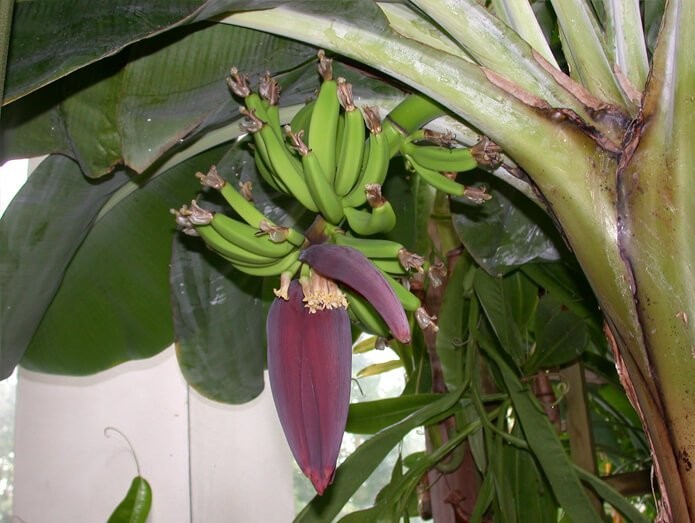
Kumquat tree in the conservatory
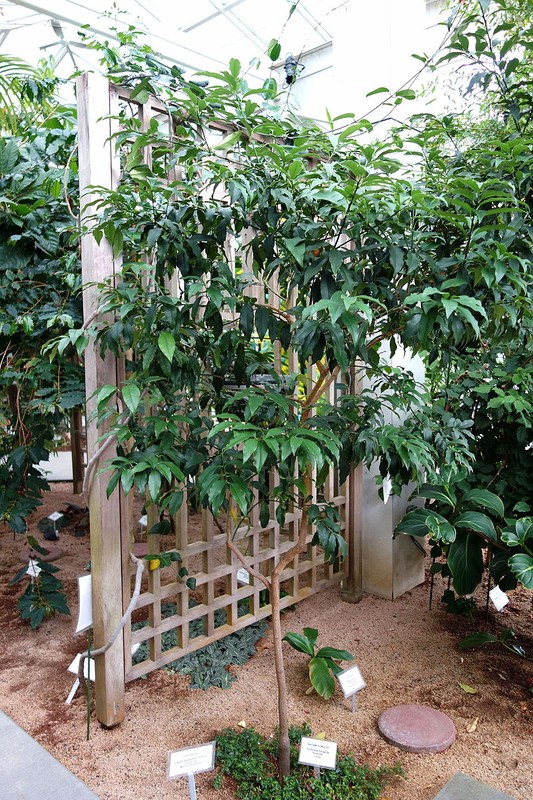
Musa acuminata, a species of banana, in the conservatory
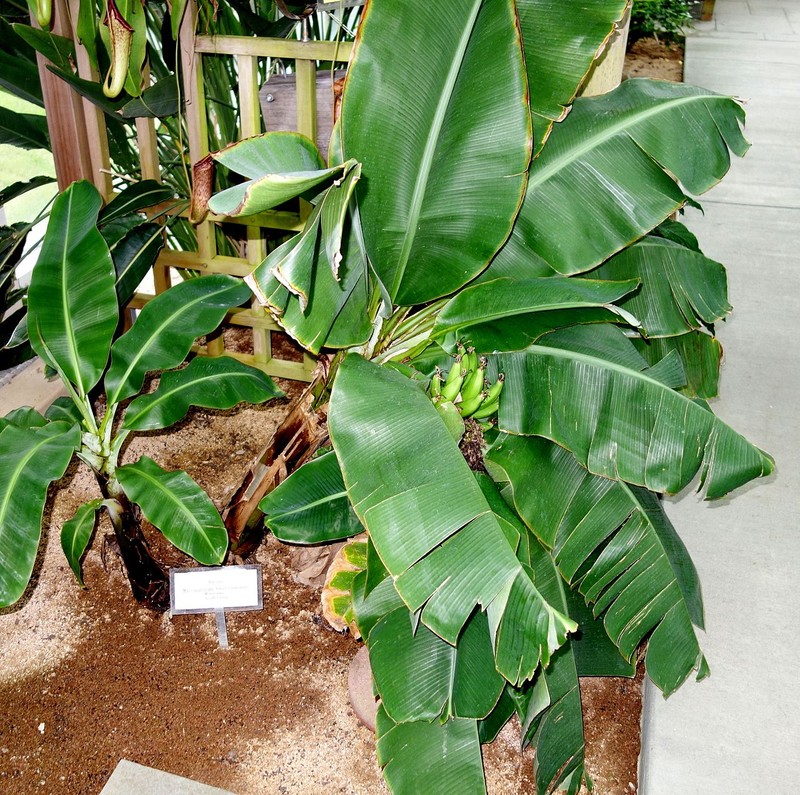
Ant Plant, Myrmecodia tuberosa
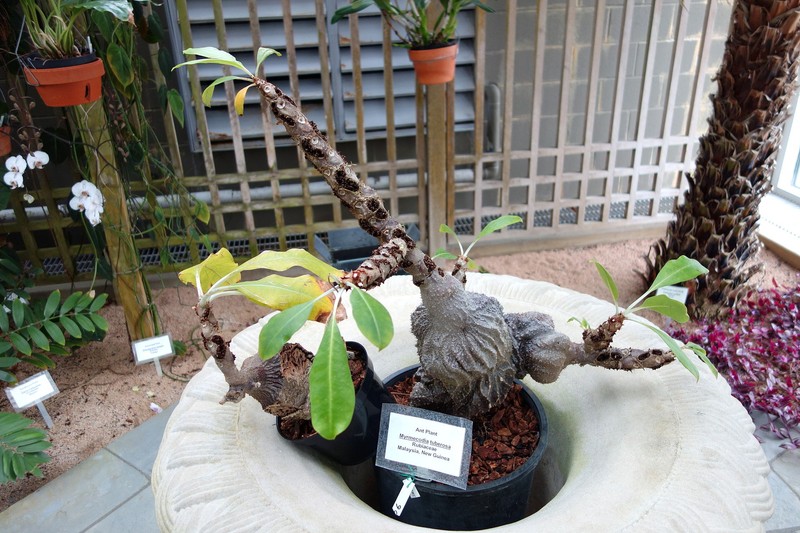
Carnivorous pitcher plant, Nepenthes 'Miranda'
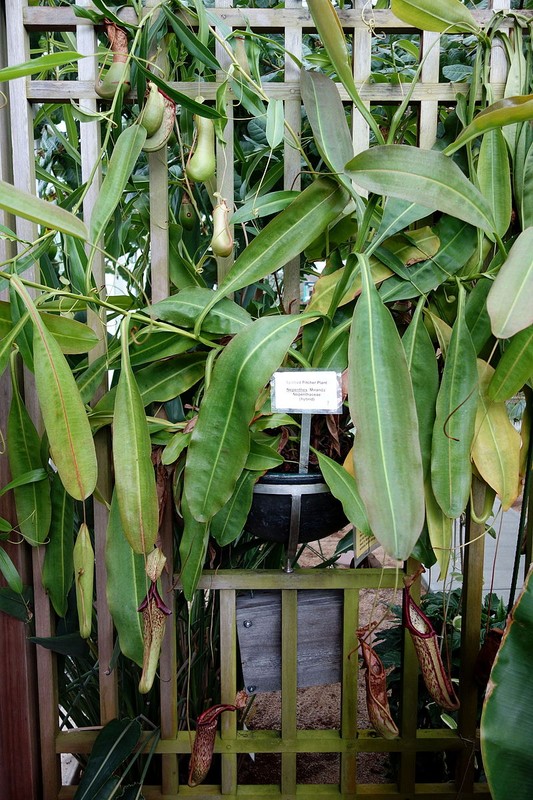
Close up of a Nepenthes 'Miranda' pitcher
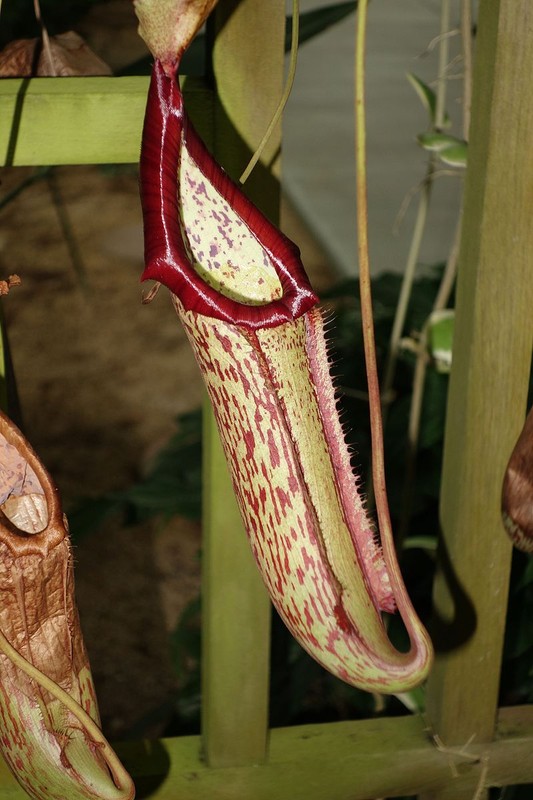
A blue poison dart frog
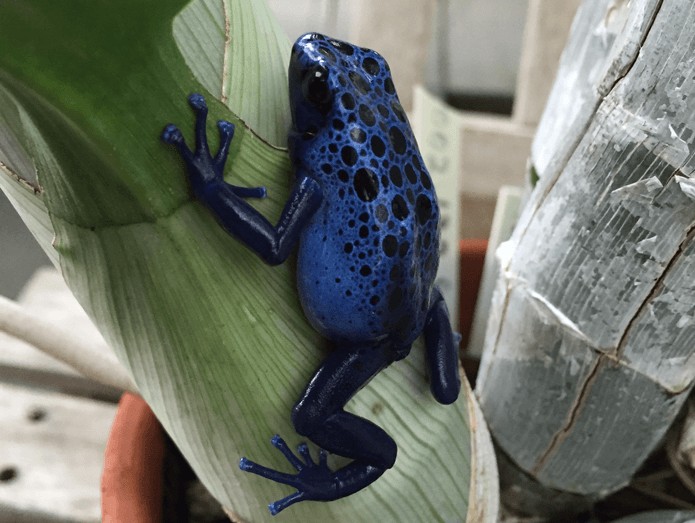
Tropical fish in the conservatory's fish tank
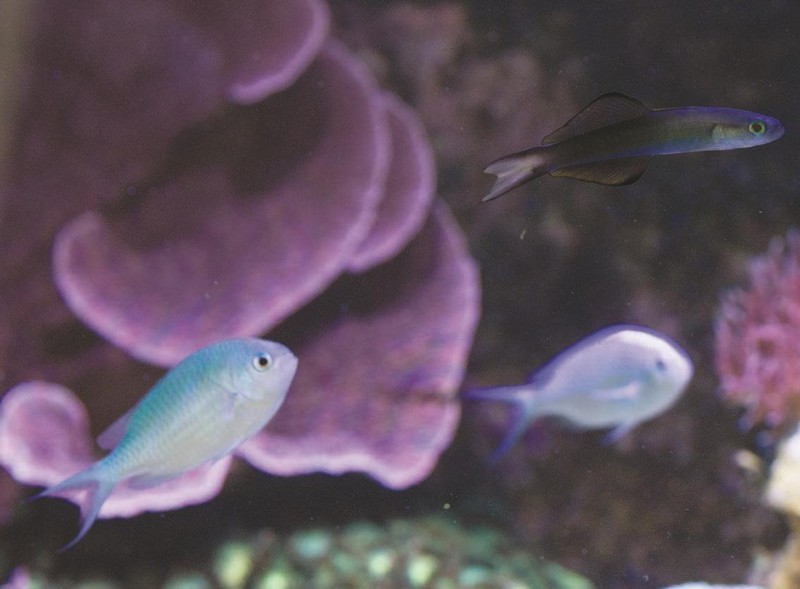
Backstory and Context
Text-to-speech Audio
The C. Fred Edwards Conservatory, which opened in 1996, is West Virginia's only subtropical and tropical plant conservatory. The plants in the collection fall into four general categories: Orchids, Agriculturally Important, Fragrant, and Unusual. The Orchid collection contains one hundred varieties of orchids, which include hybrids and species. The Agriculturally Important category includes plants that are familiar to most people because they eat them or use their products in some way. Examples include cashew, chocolate, banana, papaya, sugarcane, and coffee. Another useful plant is the carnauba wax palm, a Brazilian tree whose wax is used to make a variety of products such as varnishes, lubricant, soap, and candles. Fragrant plants include orange jessamine, white ginger, Stephanotis, and many orchids, all of which add a pleasing aroma to the air. Some plants in the Unusual category are the pitcher plant, a carnivorous plant whose leaves trap insects; the turtle plant, whose structure helps it survive droughts; the cadaver plant, known for its odor of rotting flesh during its blooming period; and the sensitive plant, which responds to touch by folding its leaflets.
The conservatory functions as a mini-ecosystem where plants and animals coexist to the benefit of one another. For example, predatory insects and mites are used in conjunction with oil and soap sprays to control plant pests such as mealybugs and aphids. Two of the conservatory’s three fish ponds function without filtration, while the koi pond contains a filtration system due to the presence of a sculpture. During the late summer months, the museum displays monarch butterfly caterpillars and pupa in the conservatory. When the butterflies emerge, they are tagged and released for their flight to Mexico for the winter. If the butterfly is caught, the tag will help investigators find out from where the butterfly came. Alongside these features, the conservatory contains a saltwater fish aquarium, exotic blue poison dart frogs, turtles, and axolotls.
The conservatory also contains two sculptures. One is a bronze sculpture titled “Play Days” by American sculptor Harriet Whitney Frishmuth. The other is the “Huntington Museum of Art Tower” by renowned studio glass artist Dale Chihuly. The sculpture, which is about six feet wide and ten feet tall in size, consists of 352 hand-blown glass pieces mounted on a steel armature that is bracketed to the bottom of the conservatory’s koi pond. The piece was commissioned by the Polan family in honor of Dorothy Lewis Polan and Lake Polan, Jr. The sculpture was created at the Chihuly Studios in Seattle, Washington, and assembled at the Huntington Museum of Art on October 24, 2006 by two members of the Chihuly staff. The piece serves as the centerpiece of the conservatory and helps tie the Museum’s missions of art and nature more closely together.
These missions have also come together through various exhibitions that have been held over the years. For instance, the conservatory’s pomegranate tree was brought in when an Egyptian exhibit was featured at the Museum, and a sugar cane plant and a zombie palm were introduced for a Haitian exhibit. An exhibition from 2012 titled “From Rugs to Riches: Treasured Textiles from the Permanent Collection” also made use of the conservatory alongside the Museum’s artworks. In addition to a wide variety of textiles from all over the world, the exhibition displayed silk moth cocoons and preserved specimens which had been obtained and raised to adulthood in the conservatory. Another exhibition, called “Natural Beauties: Exploring the Botanical World,” showcased the Museum’s collection of natural history prints in 2018. A number of the works were chosen to illustrate features of the Museum’s conservatory and nature trails, including prints depicting orchids, banana plants and butterflies.
The plants and sculptures in the C. Fred Edwards Conservatory can be viewed at any time during regular Museum hours. Visitors can also enjoy nature at the Museum through its nature trail, an approximately one-mile trail that winds through parts of the Museum’s forty acres of wooded hills. The Huntington Museum of Art is a member of the American Orchid Society (AOS), the American Public Garden Association (APGA) and the Association of Education and Research Greenhouse Curators (AERGC).
Sources
11:45 a.m.: Huntington Museum of Art, Huntington Herald-Dispatch. June 3rd 2018. Accessed April 10th 2020. https://www.herald-dispatch.com/11-45-a-m-huntington-museum-of-art/article_05a07e71-95a8-54d2-9f07-577f4d38d9e6.html.
Monarch Butterfly Project, Huntington Museum of Art. Accessed April 10th 2020. https://www.hmoa.org/nature/plant-conservatory/monarch-butterfly-project/.
Plant Conservatory, Huntington Museum of Art. Accessed April 10th 2020. https://www.hmoa.org/nature/plant-conservatory/.
Silk Moth Project, Huntington Museum of Art. Accessed April 10th 2020. https://www.hmoa.org/nature/plant-conservatory/silk-moth-project/.
https://commons.wikimedia.org/wiki/Category:C._Fred_Edwards_Conservatory#/media/File:C._Fred_Edwards_Conservatory_-_Huntington_Museum_of_Art_-_DSC05527.JPG
https://www.herald-dispatch.com/11-45-a-m-huntington-museum-of-art/article_05a07e71-95a8-54d2-9f07-577f4d38d9e6.html
https://www.hmoa.org/nature/plant-conservatory/
https://commons.wikimedia.org/wiki/Category:C._Fred_Edwards_Conservatory#/media/File:C._Fred_Edwards_Conservatory_-_Huntington_Museum_of_Art_-_DSC05528.JPG
https://commons.wikimedia.org/wiki/Category:C._Fred_Edwards_Conservatory#/media/File:C._Fred_Edwards_Conservatory_-_Huntington_Museum_of_Art_-_DSC05533.JPG
https://www.hmoa.org/nature/plant-conservatory/
https://www.dailyindependent.com/news/ghost-orchid-blooming-at-huntington-museum/article_ac4f2866-53dc-11e4-a6e8-5b7e4ca0f94b.html
https://www.hmoa.org/nature/plant-conservatory/
https://commons.wikimedia.org/wiki/Category:C._Fred_Edwards_Conservatory#/media/File:Citrus_japonica_(Fortunella_margarita)_-_C._Fred_Edwards_Conservatory_-_Huntington_Museum_of_Art_-_DSC05544.JPG
https://commons.wikimedia.org/wiki/Category:C._Fred_Edwards_Conservatory#/media/File:Musa_acuminata_-_C._Fred_Edwards_Conservatory_-_Huntington_Museum_of_Art_-_DSC05547.JPG
https://commons.wikimedia.org/wiki/Category:C._Fred_Edwards_Conservatory#/media/File:Myrmecodia_tuberosa_-_C._Fred_Edwards_Conservatory_-_Huntington_Museum_of_Art_-_DSC05532.JPG
https://commons.wikimedia.org/wiki/Category:C._Fred_Edwards_Conservatory#/media/File:Nepenthes_'Miranda'_-_C._Fred_Edwards_Conservatory_-_Huntington_Museum_of_Art_-_DSC05543.JPG
https://commons.wikimedia.org/wiki/Category:C._Fred_Edwards_Conservatory#/media/File:Nepenthes_'Miranda'_-_C._Fred_Edwards_Conservatory_-_Huntington_Museum_of_Art_-_DSC05546.JPG
https://www.hmoa.org/nature/plant-conservatory/
https://www.herald-dispatch.com/11-45-a-m-huntington-museum-of-art/article_05a07e71-95a8-54d2-9f07-577f4d38d9e6.html
